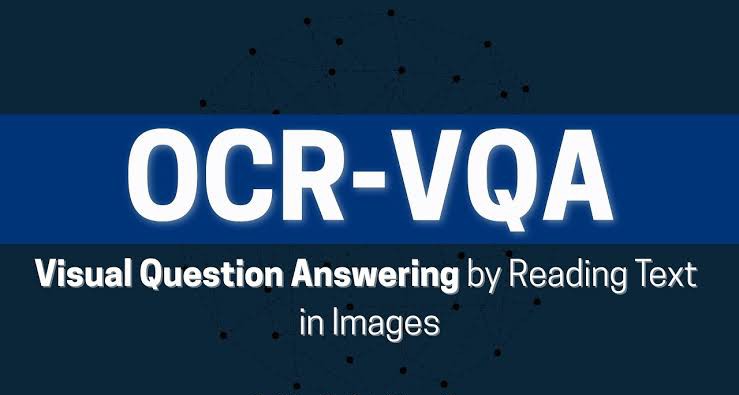Visual Question Answering (VQA) is interdisciplinary research area within artificial intelligence. It seeks to bridge the gap between computer vision and natural language processing. Enabling machines to answer questions about images and videos. VQA has potential to revolutionize how we interact with visual data. This extensive exploration covers fundamentals of VQA its key techniques, applications. Challenges and future directions
Visual Question Answering is complex AI task that combines image recognition with natural language understanding. The core idea behind VQA is to enable computer to interpret an image or video. It can then respond to questions related to visual content. This process involves understanding context of both the image and the query. This is necessary to generate accurate and meaningful answers.
The evolution of VQA can be traced back to advancements in computer vision and natural language processing. Early efforts focused on basic image classification and object detection. Algorithms could identify objects within images. Yet they lacked ability to answer contextual questions. Integration of language models with visual recognition systems marked significant milestone. Introduction of deep learning techniques particularly convolutional neural networks (CNNs) and recurrent neural networks (RNNs), greatly enhanced capability of machines. They could now understand and generate human-like responses.
Key Techniques in Visual Question Answering
1. Image Understanding: The first step in VQA involves analyzing the visual input. Techniques such as object detection, semantic segmentation, and scene recognition are used to extract relevant features from images. Convolutional Neural Networks (CNNs) are commonly employed to process and understand these visual features.
2. Question Understanding: Natural language processing (NLP) techniques are used to comprehend the question posed about the image or video. This involves parsing the question, understanding its semantics, and determining the context in which it is asked. Recurrent Neural Networks (RNNs) and transformers are often used to process and encode textual information.
3. Fusion of Visual and Textual Information: Combining the visual and textual data is crucial for generating accurate answers. Attention mechanisms play a vital role in aligning visual features with textual information. For instance, attention models can highlight relevant parts of an image based on the question being asked.
4. Answer Generation: The final step involves generating a coherent and accurate answer based on the integrated visual and textual information. This can be achieved through various techniques, including sequence-to-sequence models, which map the combined features to a response.
Applications of Visual Question Answering
1. Healthcare: VQA systems can assist medical professionals by analyzing medical images and providing relevant information based on diagnostic queries. For instance, VQA can help in identifying abnormalities in X-rays or MRIs and provide contextual explanations.
2. Autonomous Vehicles: In the context of self-driving cars, VQA can enhance the vehicle's ability to understand its surroundings. By answering questions related to road signs, obstacles, or traffic signals, VQA systems contribute to safer and more efficient autonomous driving.
3. Assistive Technology: VQA can support visually impaired individuals by providing descriptive answers about their surroundings. For example, a VQA system can describe the content of a photograph or identify objects in a room based on verbal queries.
4. E-commerce: In online shopping, VQA can improve user experience by allowing customers to ask questions about product images. For example, users can inquire about specific features of clothing items or get information about product dimensions.
Challenges in Visual Question Answering
1. Ambiguity and Complexity: One of the primary challenges in VQA is handling ambiguity and complexity in both visual and textual inputs. Questions can vary widely in terms of specificity and context, making it difficult for algorithms to provide accurate answers consistently.
2. Dataset Limitations: The performance of VQA systems heavily relies on the quality and diversity of the datasets used for training. Many existing datasets are limited in scope or lack sufficient variation, which can affect the generalization capabilities of VQA models.
3. Multimodal Integration: Effectively integrating visual and textual information remains a challenging task. The alignment of features from different modalities requires sophisticated techniques to ensure that the information is fused in a meaningful way.
4. Interpretability: Understanding how VQA models arrive at their answers can be challenging. The complexity of deep learning models makes it difficult to interpret the reasoning behind specific responses, which can be problematic in critical applications such as healthcare.
Future Directions in Visual Question Answering
1. Improved Datasets: Future advancements in VQA will likely involve the creation of more comprehensive and diverse datasets. These datasets will aim to cover a wider range of scenarios and contexts, improving the ability of VQA systems to generalize across different domains.
2. Enhanced Multimodal Models: Researchers are exploring new architectures and techniques to better integrate visual and textual information. Advances in attention mechanisms, graph neural networks, and transformer-based models hold promise for improving VQA performance.
3. Real-time Applications: The development of real-time VQA systems will enable applications in dynamic environments, such as live video analysis and interactive assistance. These systems will need to process and respond to queries quickly and accurately.
4. Ethical Considerations: As VQA systems become more prevalent, addressing ethical concerns related to privacy, bias, and fairness will be crucial. Ensuring that VQA technologies are used responsibly and ethically will be an important aspect of their development.
Conclusion
Visual Question Answering represents a significant advancement in the field of artificial intelligence, bridging the gap between visual perception and language understanding. By enabling machines to answer questions about images and videos, VQA has the potential to enhance various applications, from healthcare to e-commerce. However, challenges related to ambiguity, dataset limitations, and multimodal integration need to be addressed to fully realize the potential of VQA systems. Future advancements in datasets, multimodal models, and real-time applications will shape the evolution of VQA, making it an exciting area of research with far-reaching implications.
